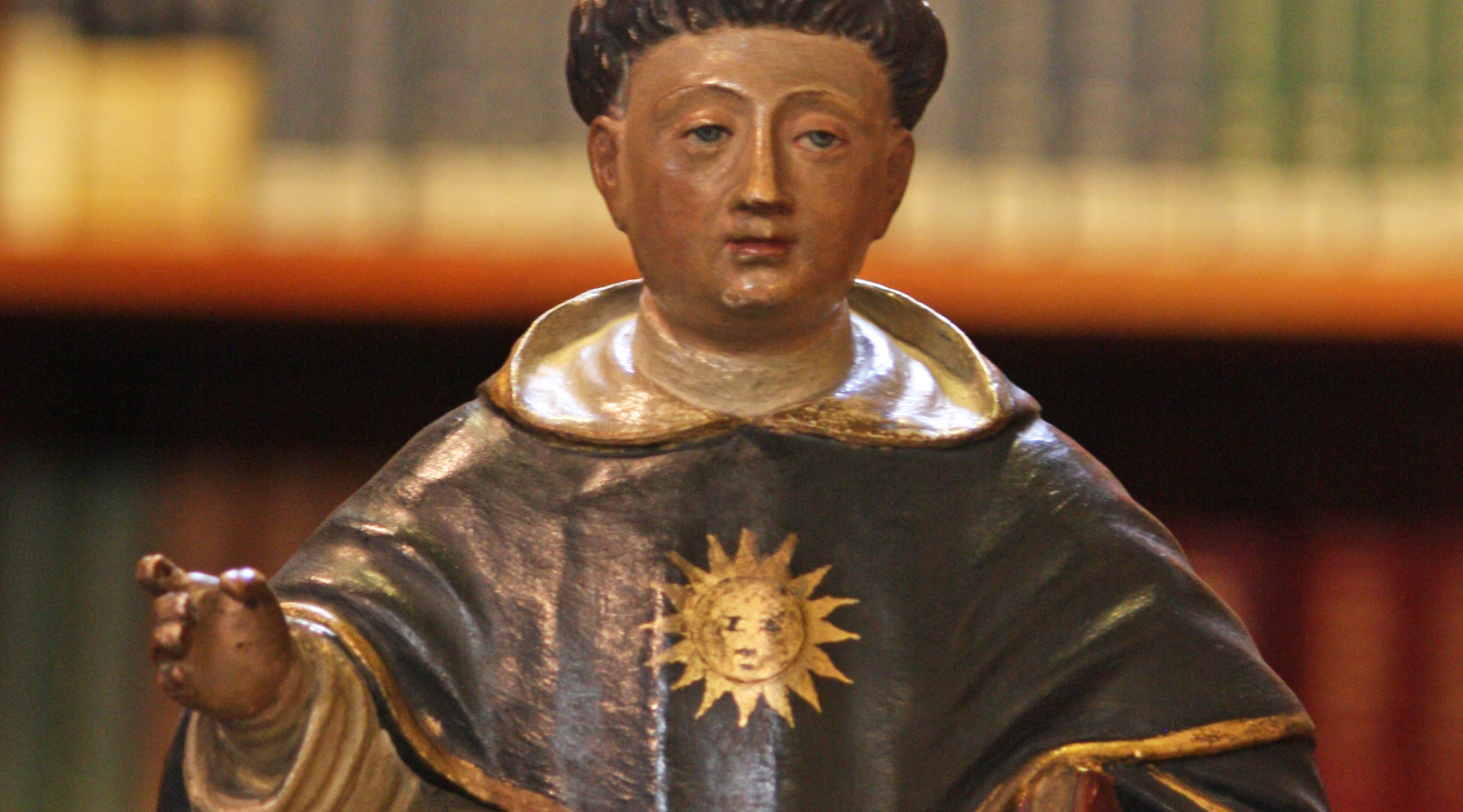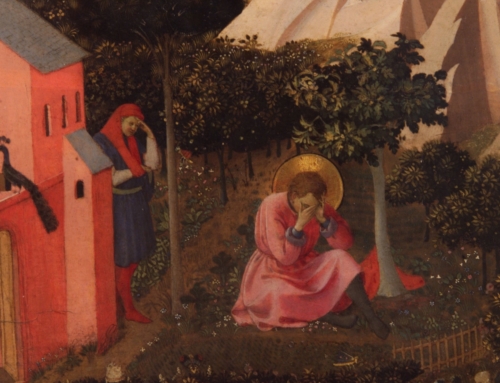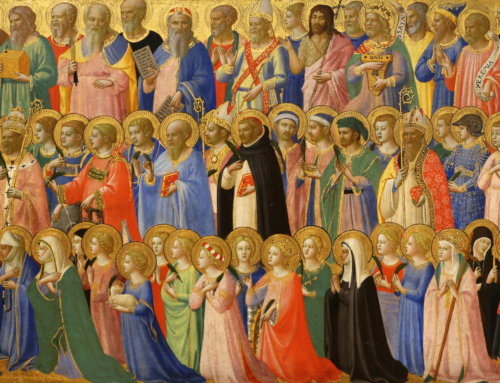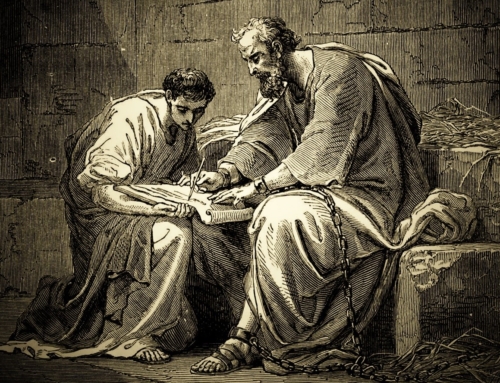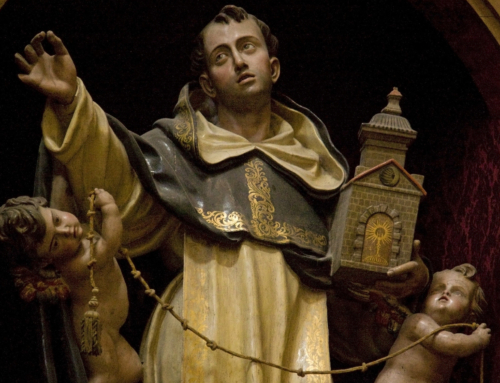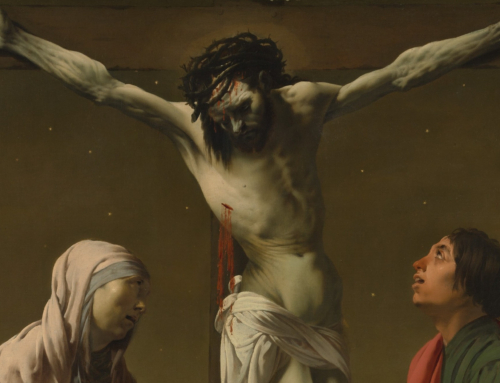In February 2025, scientists released a digital reconstruction of Saint Thomas Aquinas’s face based on his relics. Dominican friars shared what it meant to them to glimpse their beloved brother, but they are not the first to be moved by his impressive appearance.
In fact, the appearance of St. Thomas was nothing less than arresting. One account reports that “when the common people were in the fields they would put aside their work in order to see him, and they would rush to meet him, admiring such great size of body and beauty in human appearance, although they were rushing to him more on account of his beauty than his holiness or even his nobility” (Laurent, Marie-Hyacinthe. “Un Légendier Dominicain Peu Connu.” Analecta Bollandiana 58 (1940): 43. Translation is the author’s.).
St. Thomas’s biographers give us more help in understanding why his appearance was so captivating. The earliest biographer of St. Thomas, William of Tocco, wrote, “With respect to the natural constitution of our doctor’s body, that he was of a tall stature and erect bearing, and this uprightness corresponded well to the state of his soul” (William of Tocco. The Life of Saint Thomas Aquinas, 139). Thomas was certainly tall, but his height was accentuated by his upright posture, as he carried himself with the manly dignity that is fitting for God’s ministers. His upright posture was a sign of his interior rectitude and uprightness of soul.
Tocco continues his description saying, “His head, which was somewhat bald, was of a great size, since the perfections of the sensitive powers that are subject to reason require well-formed organs. His body was of the most sensitive constitution even as his mind was marked by the subtlety of his intellect.” The whole body of St. Thomas was proportioned and well-suited for intellectual activity. In short, his large head and keen sense were at the service of his powerful intellect.
Another biographer, Bernard Gui, describes Thomas’s appearance, saying, “His complexion was healthy, as of one who shunned excess of any kind; and in color like ripe wheat” (Bernard Gui. The Life of Saint Thomas Aquinas: Biographical Documents, trans. Kenelm Foster, 53). Thomas’s heroic practice of Christian temperance was visible even externally. Certainly, this does not accord with the myth of Thomas as an obese, sedentary friar.
Tocco adds one more important element to his description of the bodily disposition of Thomas. He recounts that “Whenever he was given to exert himself in various acts of bodily strength, Thomas showed himself a robust and virile man” (Tocco, 139). Far from appearing weak or effeminate, Thomas’s appearance bore witness to his strength of will and body. Gui aptly summarizes his physical description of Thomas by saying that his body “was, in short, a noble instrument for noble deeds, showing that God Himself had designed it for this purpose” (Gui, 53).
Though all these descriptions of St. Thomas offer us a touching meditation on his interior virtues and how they were manifested in his exterior appearance, the most profound explanation of Thomas’s appearance is offered by Bernard Gui earlier in his Vita of Aquinas. Gui recounts,
“So much charity and kindliness had a wonderful effect even on his outward appearance; as we know from the constant and loving testimony of those who knew him; they say that it was a refreshment to the spirit merely to live with him and to be able from time to time to speak with him. All this is clear evidence that the Holy Spirit was in him; such fruits have no other root than the divine Love” (Gui, 52).
The peasants who abandoned their labor to admire St. Thomas as he traveled by foot through the highways of Europe initially only noticed his great size as they marveled at him from a distance. Yet, as they approached, they marveled at “such great . . . beauty in human appearance.” Those close to Thomas recognized that his beauty was the result of his sanctity.
As brothers and friends of Thomas today, we naturally wonder about his appearance. As we consider possible facial recreations and imagine the countenance of the saint, we should also imitate his virtue. Like the peasants who rushed to meet St. Thomas on the road, we too, having been drawn in by his appearance, can be attentive to his teaching and edified by his life. Finally, by his prayers, we may attain a share in his deep and fruitful contemplative life.
✠
Photo by Fr. Lawrence Lew, O.P. (used with permission)

